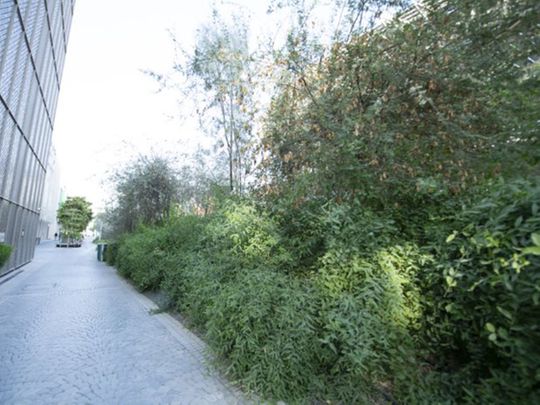
Dubai: Having a hard time finding the right plants for your garden? Always on the lookout for plants that will survive the UAE weather and grow well in the sand? Expo 2020 Dubai has some answers.
During one of my trips to the site, I stood amazed on a walkway in the Hope avenue – above me was a mesh roof covered with leaves. What was this plant looking so happy in the heat? Where was it growing from? I couldn’t see any planters or water mechanisms around it. I asked a volunteer – are those real leaves? She confirmed they were. It struck me then, how within a short span of five years, the Expo 2020 site has created lush greenery all around.
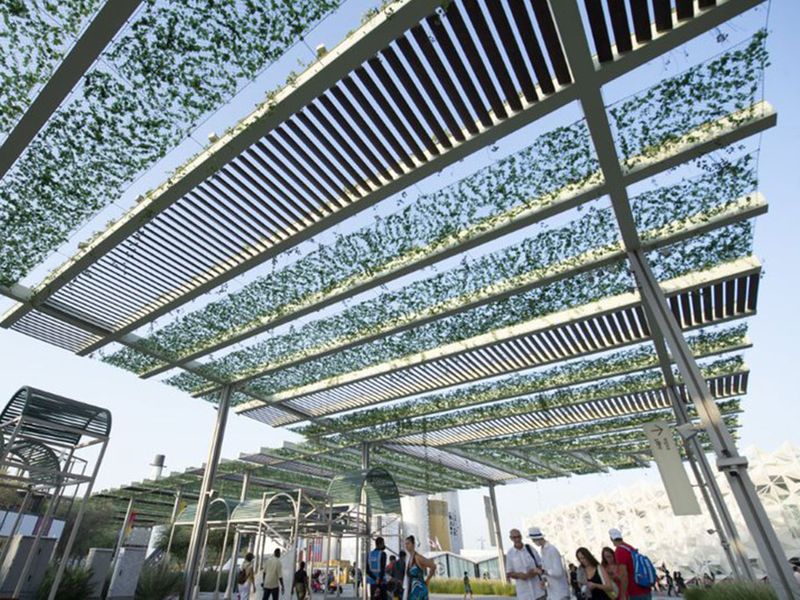
To find out the secret behind the greenery at the Expo 2020 site, and the name of the mystery plant decorating the roof, we spoke to Dina Storey, Director of Sustainability, and Roman Hawczak, the Senior Landscape Manager at the Expo 2020 Dubai.
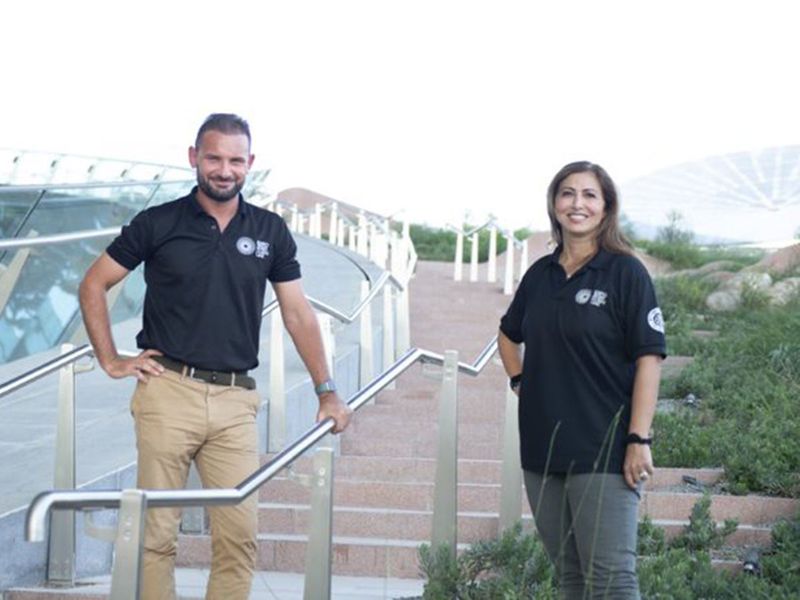
So how did the team create green gardens? The answer was simple, but the process was not. After a lot of research the team zeroed in on plants that are found abundantly in the UAE. They ventured into deserts and picked out plants they knew will survive the heat and soil at the site. There was a lot of planning and innovation that was needed. How would they irrigate the area while ensuring sustainability?
To begin with, shortly after Dubai won the bid in 2013 to host the World Expo in 2020, a thorough environmental impact assessment (EIA) took place. The environmental approach of Expo 2020 Dubai was based on this. A group of horticulturalists and environment experts came together to decide how to make the Expo 2020 green, but without disturbing the natural flora and fauna of the region.
Dina Storey, the Director of Sustainability told Gulf News: “We wanted visitors to experience the real flora of the region. We decided it doesn’t have to be perfect, it has to be real.”
Storey explained that not only would native plants and adaptive plants be easy to source, they would also help reduce water consumption as they could survive in the in the intense summer heat. “Ninety five per cent of the landscape plants are native and adaptive species to the region. The use of these species has helped us save 11 per cent of water this year, as compared to last year, for irrigating the site.”
The Expo 2020 nursery
Just a few kilometers off the Expo 2020 Dubai site is a giant nursery stretching across 220,000 square meters. This is the Expo 2020 Dubai nursery, which houses millions of plants that get planted at the Expo 2020 Dubai site. According to Storey: “The nursery housed approximately 14,000 trees, 2,500 date palms, 3.5 million shrubs, and more than 460 Ghaf trees.”
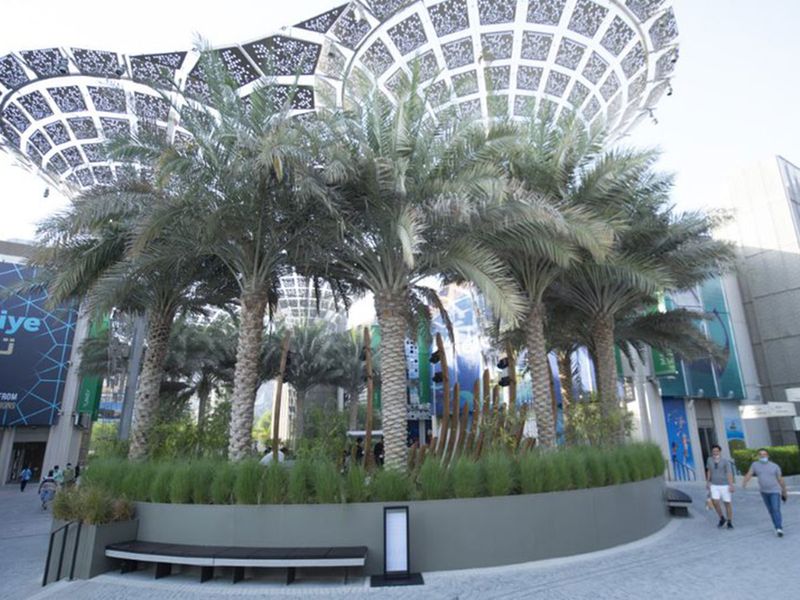
Roman Hawczak, the Senior Landscape Manager, told Gulf News: “The nursery was introduced in 2015 to supply fauna to the Expo site, it was built way before the site was built. We started bringing in seeds, cuttings from local desert plants, and trees that would grow locally. We increased the sizes of the pots to help the roots and the plants grow. We set up multiple greenhouses and monitored to see the performance of the plants. The successful ones we introduce to the Expo site.”
“The nursery is almost 15 acres in size and it’s surrounded by a greenbelt to control dust. The nursery is close to the site to mimic the microclimate at the Expo site, so we know what’s the most adaptive to the site. It can’t be far away, plants and methods that work a few kilometers away may not necessarily work here,” Hawczak added.
Adaptive species
“Most plants that we have at the site are either native or adaptive species. Adaptive species are not traditionally naturally found in the region, but they’ve adapted to the climate and they can tolerate the heat, and can be used in your local garden or in a commercial type landscape,” he said. Hawczak also confirmed that these adaptive species will be made available for purchase in the local markets.
For gardening enthusiasts, he has a tip: “Try growing local plants in your garden, look at what works the best and use more of those plant species to keep your garden green.
“We worked with many specialist consultants, both regionally and internationally. We work closely with local partners such as Dubai Municipality, their partners and local producers, sourcing the right material and using the knowhow, the knowledge and harnessing that knowledge to understand what we can grow here, and push the boundaries on what can be done here locally in the market.”
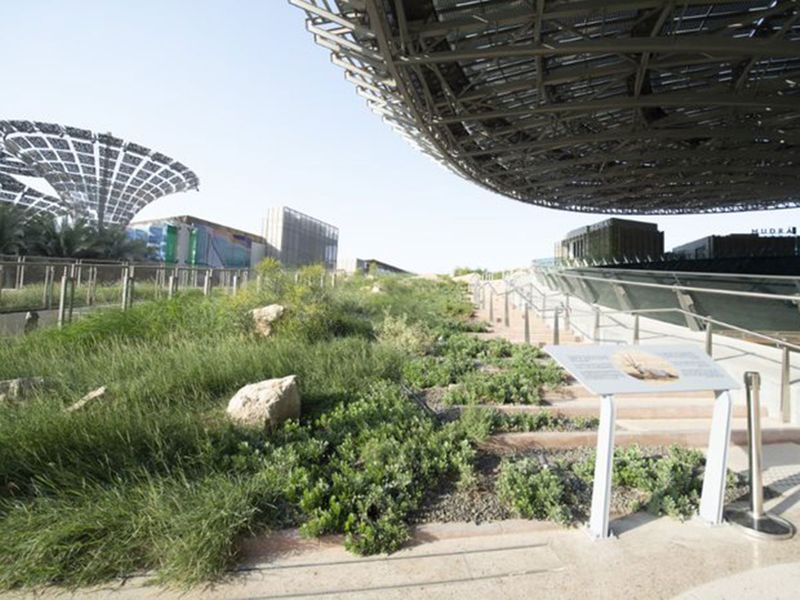
Back to the walkway in the Sustainability pavilion. Hawczak said those are Ipomoea Palmata plants, which are similar to railway creepers commonly seen in the UAE, but sturdier to survive the weather.
He explained: “It’s quite a unique scenario where we have plants growing eight meters above the ground and climbing down. This obviously creates a beautiful environment aesthetically, but at the same time, it helps reduce the ambient temperature, and improves air quality. Within the shade structure itself, we have a micro-irrigation system, which targets water into small planters on the top of the structure. These planters hold the roots. The water is then drained down the poles into the sewage network system.”
Native desert shrubs and bushes can also be seen on the slanting terrace at Terra – the Sustainability Pavilion.
Green waste to make soil fertile
Anyone who loves growing plants would know how important it is to get the right soil. For this, organic soil is used at the nursery to grow plants and germinate seeds. The soil is comprised of 70 per cent shredded green waste from the site (excluding palm fonds), 25 per cent local sweet sand, and the remaining is coco peat.
Hawczak added: “We’ve used local sweet sand as the primary ingredient and introducing what we’ve produced from day one in the nursery, ever since we started producing green waste, the byproducts from clippings and cuttings from plant material. We’ve broken it down in our organic compost facility and then we have reintroduced that back to the soil. So everything we see from our edible gardens to our xeriscaping (the process of landscaping, or gardening, that reduces or eliminates the need for irrigation), it’s all coming from reproduced, biodegradable green waste from the site.”
Use of treated water for irrigation
According to the Expo 2020 Dubai Sustainability report, the Terra pavilion also aims to achieve net zero water usage through efficient use of groundwater desalination and the reuse of treated blackwater and greywater to irrigate the surrounding native landscape.
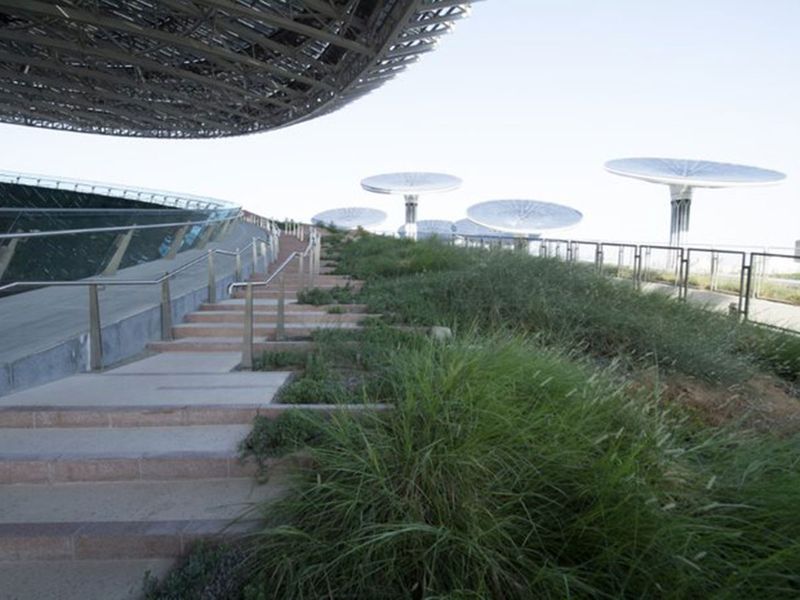
“To achieve the sustainability goal, we are also considerably reducing the water usage on site. And, what we’ve been able to do at Terra pavilion is very unique – we are getting condensed AC water and brown water, it’s all ending up in our reed bed, which then goes back into our irrigation system. It just goes to show how such a passive system that works behind us, underneath us, and all around us at the Expo site, can connect in such a sustainable way,” Hawczak explained.
Dina Storey added: “Nearly 95 per cent of the site is irrigated through Treated Sewage Effluence (TSC).” As of the last reporting cycle Expo has used 426,493 liters of TSC water.
Other considerations to reduce water usage include design, soil water-retention properties, irrigation equipment and scheduling technologies, such as incorporating underground drip irrigation systems to minimise water loss through evapotranspiration (loss of water from the soil both by evaporation from the soil surface and by transpiration from the leaves of the plants growing on it), planting schedules and establishment periods.
Four queen bees
The introduction of the plants in the region also saw new ecosystems emerging in the area. Storey said: “We have an increase in different animals, wildlife, butterflies and bees that are all on site. We reduced the use of pesticides to encourage the ecosystem.”
As an example she spoke of how a bee hive was found on Terra four years back, and the Beekeepers’ Association were called to move them to a safe spot. Since then, they’ve grown in abundance. “So much so, that there are four Expo Queen bees instead of one. Some honey was also harvested, and gifted to ambassadors,” she added.


